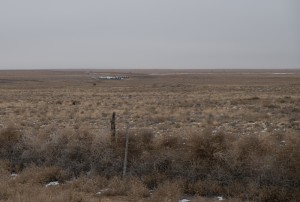The question of how tumbleweeds got to America keeps coming up in conversation, but I can never quite remember the details, so I’m typing this up here so I can Google it later as needed. Here’s the version from Tim Egan’s terrific book The Worst Hard Time, a gripping narrative history of the Dust Bowl.
The seeds of the Russian thistle came to the Americas sewn into the vest pockets of the Russlanddeutschen, immigrants who had left Germany for Russia, thence on to the High Plains along the Oklahoma-Texas border:
The Russlanddeutschen were not Russian, nor were they fully German. Hardened by long exile, state cruelty, and official ridicule, they wanted only to be left alone. The treeless expanse of the southern plains was one of the few places in the United States that looked like home.
They brought with them the seeds of a hardy red wheat without which, Egan argues, “it is possible that wheat never would have been planted on the dry side of the plains.”
The turkey red, short-stemmed and resistant to cold and drought, took so well to the land beyond the ninety-eighth meridian that agronomists were forced to rethink the predominant view that the Great American Desert was unsuited for agriculture.
And in the seed packets, sewn into those vest pockets, were stray seeds of a thistle the Russlanddeutschen called perekati-pole, which translates roughly, Egan explains, as ‘”roll-across-the-field.”

